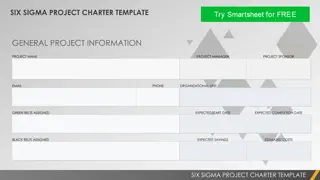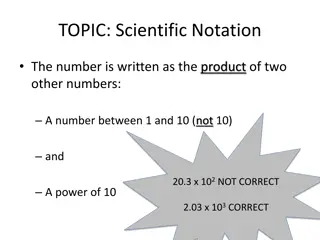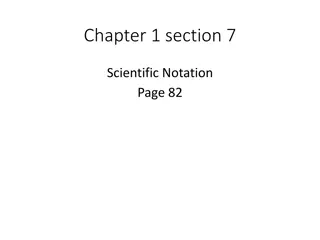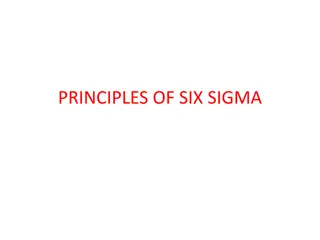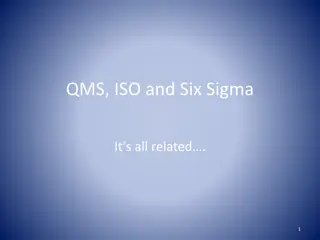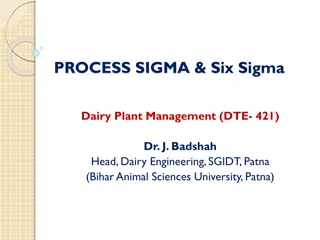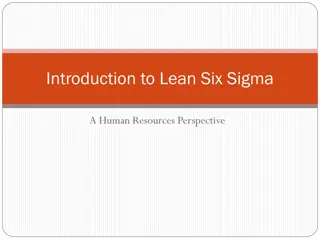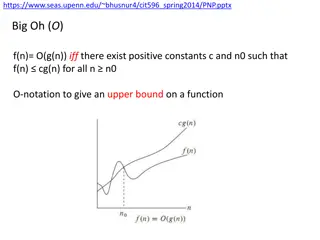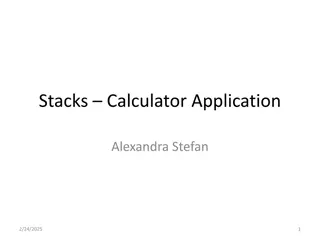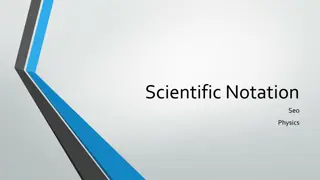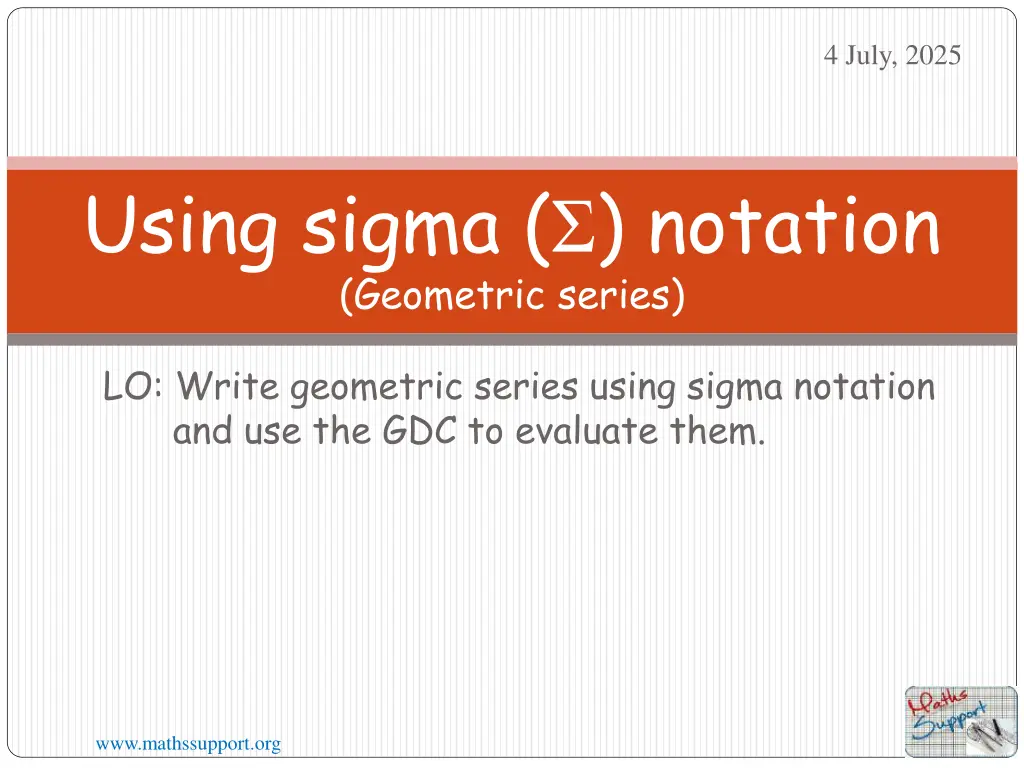
Geometric Series Using Sigma Notation
Learn how to write geometric series using sigma notation and evaluate them using a graphing display calculator. Explore examples and applications of sigma notation in series calculations. Utilize the Greek symbol sigma for summation and find the sum of terms in a series efficiently.
Download Presentation

Please find below an Image/Link to download the presentation.
The content on the website is provided AS IS for your information and personal use only. It may not be sold, licensed, or shared on other websites without obtaining consent from the author. If you encounter any issues during the download, it is possible that the publisher has removed the file from their server.
You are allowed to download the files provided on this website for personal or commercial use, subject to the condition that they are used lawfully. All files are the property of their respective owners.
The content on the website is provided AS IS for your information and personal use only. It may not be sold, licensed, or shared on other websites without obtaining consent from the author.
E N D
Presentation Transcript
4 July, 2025 Using sigma ( ) notation (Geometric series) LO: Write geometric series using sigma notation and use the GDC to evaluate them. www.mathssupport.org
Using sigma () notation When working with series, the Greek symbol (the capital letter sigma) is used to mean the sum of . For example: ? and this is the last value of i. ?? ?=? This is the first value of i represents a finite series containing nterms: You read this the sum of all the terms uifromi = 1 toi = n u1 + u2 + u3+ + un The terms in the series are obtained by substituting 1, 2, 3, , nin turn for iinui. www.mathssupport.org
Using sigma () notation For example, suppose we want to write in sigma notation the sum of the first 6 terms of the series whose nthterm is of the form r2 . We can write: (2n) r = 1 6 21 + 22 + 23 + 24 + 25 + 26 = 126 www.mathssupport.org
Using sigma () notation Write the series 4 + 20 + 100 + 500 + 2500 + 12500 using sigma notation the terms are a geometric progression with u1 = 4 and r = 5 un= u1 rn 1 First we have to find the general term un . n 1 un=4 (5) This series is the first six terms of the geometric progression Using sigma notation we write: ? ?(?? ?) ?=? www.mathssupport.org
Using sigma () notation ? Evaluate ???? ?=? Substituting n = 1, 2, 3, 4 into (-1)nn2 (-1)2(2)2 (-1)1(1)2 -1 (-1)3(3)2 (-9) (-1)4(4)2 + + + + + 4 16 + = 10 www.mathssupport.org
Using sigma () notation Using GDC to evaluate a geometric series ? Evaluate ?(?? ?) ?=? We are going to use a Graphing display calculator to solve the problem Texas Instruments www.mathssupport.org
notation - Using GDC Texas Instruments Using GDC to evaluate a a geometric series ? Evaluate ?(?? ?) ?=? Turn on the GDC Press MATH www.mathssupport.org
notation - Using GDC Texas Instruments Using GDC to evaluate a a geometric series ? Evaluate ?(?? ?) ?=? Turn on the GDC Press MATH Scroll up to 0: summation ( www.mathssupport.org
notation - Using GDC Texas Instruments Using GDC to evaluate a a geometric series ? Evaluate ?(?? ?) ?=? Turn on the GDC Press MATH Scroll up to 0: summation ( ENTER www.mathssupport.org
notation - Using GDC Texas Instruments Using GDC to evaluate a a geometric series ? Evaluate ?(?? ?) ?=? Turn on the GDC Press MATH Scroll up to 0: summation ( ENTER Type x 1 1 ) x ( 5 6 4 ^ www.mathssupport.org
notation - Using GDC Texas Instruments Using GDC to evaluate a a geometric series ? Evaluate ?(?? ?) ?=? Turn on the GDC Press MATH Scroll up to 0: summation ( ENTER Type 1 x x 1 ) ( 5 6 4 ENTER www.mathssupport.org
notation - Using GDC Texas Instruments Using GDC to evaluate a a geometric series ? Evaluate ?(?? ?) ?=? Turn on the GDC Press MATH Scroll up to 0: summation ( ENTER 4x 2 Type ENTER 1 x 15 = 15 624 www.mathssupport.org
Thank you for using resources from A close up of a cage Description automatically generated For more resources visit our website https://www.mathssupport.org If you have a special request, drop us an email info@mathssupport.org www.mathssupport.org


